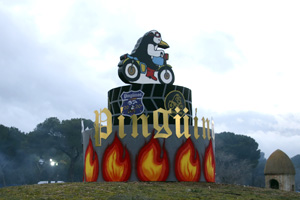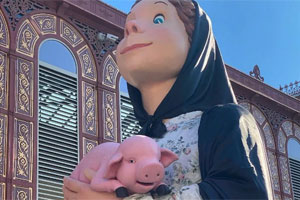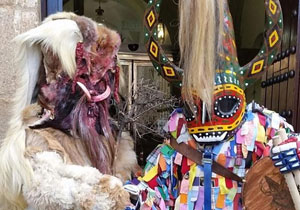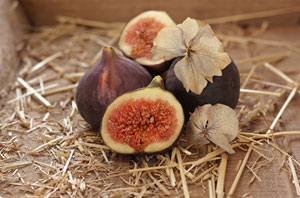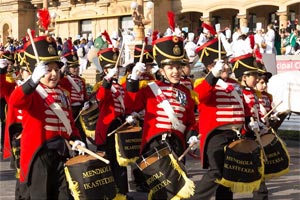Holy Week in Seville
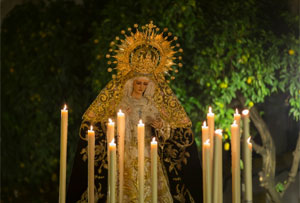
How to live with fervour the Holy Week in Seville
Holy Week in Seville is a very important religious celebration that takes place every year in the city during the last week of Lent, culminating with Easter. If you want to experience Holy Week in Seville with fervour, here are some tips:
- Attend the processions: Holy Week in Seville is characterised by the processions of the brotherhoods, which parade through the streets of the city. If you want to experience Holy Week in Seville with fervour, it is important that you attend the processions and immerse yourself in the religious and exciting atmosphere that surrounds these parades.
- Find out about the brotherhoods and their traditions: Each brotherhood has its own traditions and customs, so it is important to learn about them in order to better understand what you are seeing during the processions. You can read more details about the brotherhoods and their history on dedicated websites or in specialised tourist guides.
- Respect and silence: During the processions, it is important to maintain an atmosphere of respect and silence, as it is a religious celebration. Therefore, avoid talking loudly or taking flash photography.
- Participate in the early morning of Good Friday: The dawn of Good Friday is one of the most exciting moments of Holy Week in Seville, as it is when the most important processions take place. If you want to experience Holy Week in Seville with fervour, don't miss this night and take part in the processions.
- Taste the typical dishes of Holy Week: Gastronomy is an important part of Holy Week in Seville. During this time, you can find many typical dishes of the region, such as torrijas, chickpea stew, fritters and pestiños. Try some of these dishes to make the most of Holy Week in Seville.
In summary, to experience Holy Week in Seville with fervour it is important to attend the processions, find out about the brotherhoods and their traditions, maintain respect and silence during the processions, take part in the early hours of Good Friday morning and try the typical Easter dishes.
(Brief) guide to the most important processions of Holy Week in Seville
Holy Week in Seville has more than 60 brotherhoods that carry out their processions during the week. Here is a brief guide to the most important processions and their characteristics for each day:
Palm Sunday
- The procession of the Borriquita is the most emblematic of this day, in which the triumphal entry of Jesus into Jerusalem mounted on a donkey is represented.
- The brotherhood of the Hermandad de la Estrella is formed by the Cristo de las Penas and María Stma de la Estrella coronada.
- Another important procession on this day is that of the Brotherhood of Love, which represents the entrance of Jesus into the city.
Easter Monday
- The Brotherhood of Santa Genoveva, which has the longest itinerary.
- The Brotherhood of the Holy Cross is another important brotherhood on Easter Monday and is notable for the large size of its floats.
Holy Tuesday
- The procession of the Hermandad de los Javieres is one of the most exciting on this day. The brotherhood stands out for the great elegance of its floats and the fervour of its members.The
- Brotherhood of the Dulce Nombre.
Holy Wednesday
- The Brotherhood of La Sed.
- The Brotherhood of La Lanzada.
Maundy Thursday
- The procession of the Hermandad de la Macarena is one of the most popular and exciting processions of Holy Week in Seville. This brotherhood has the most venerated image in the city, the Virgen de la Esperanza Macarena.
- The procession of the Hermandad del Gran Poder is one of the most important and crowded of the Holy Week in Seville. This brotherhood stands out for its great devotion and for having some of the most impressive floats.
- The procession of the Brotherhood of the Cristo de la Buena Muerte y Nuestra Señora de la Angustia, known as "Los Gitanos", is one of the most awaited and popular of Holy Week in Seville.
Good Friday
- The Brotherhood of El Cachorro.
- The Brotherhood of La O.
Holy Saturday
- The procession of the Soledad de San Lorenzo is the highlight of this day. The brotherhood has a great devotion and is known for the beauty of its floats and the elegance of its brothers.
Easter Sunday
- The Resurrection procession is the most important one on this day. It represents the resurrection of Christ and the image of the Virgen de la Alegría.
Origins and history of Holy Week in Seville
Holy Week in Seville has a long history and its origins date back to the 13th century, when the first brotherhood was founded in the city. Over the centuries, the brotherhoods have multiplied and evolved to become one of the most important celebrations in the city.
The origin of the cofradías can be found in the medieval brotherhoods and confraternities that arose in Europe to care for the sick, the poor and the needy. In Seville, the first confraternity was founded in 1247 under the patronage of the Virgen de la Antigua, and in the following decades many others were created, such as that of Santa Caridad and that of the Divino Salvador.
In the 17th century, Holy Week in Seville acquired great importance thanks to the participation of the brotherhoods, which began to take part in processions with images of the Passion of Christ and the Virgin. The oldest image in procession in Seville is the Virgen de la Estrella, from the brotherhood of Los Estudiantes, which dates back to the 16th century.
In the 18th century, the brotherhoods began to work on the creation of processional pasos, which are the structures used to transport the images during the processions. These pasos were authentic works of art, decorated with sculptures and reliefs depicting scenes from the passion and death of Christ.
Throughout the 19th century, Holy Week in Seville suffered a decline due to wars and epidemics, but from the 20th century onwards it began to recover. Today, Holy Week in Seville is one of the most important religious celebrations in the world, and each year it attracts thousands of tourists who flock to the city to witness the processions and enjoy its unique atmosphere.
How to enjoy Holy Week in Seville beyond religious fervour
Holy Week in Seville is a very important religious event, but it is also an opportunity to enjoy the city and its culture. These are just a few recommendations to enjoy Holy Week in Seville beyond the religious fervour:
- Discover the gastronomy of Seville: During Holy Week, Seville offers a wide variety of typical dishes, such as potaje de vigilia, fried cod or torrijas. Take the opportunity to try the local gastronomy in one of the many bars and restaurants in the city.
- Visit the museums and monuments: Seville has a large number of museums and monuments worth visiting. Take advantage of the free time between processions to visit the Cathedral of Seville, the Giralda, the Alcázar or the Museum of Fine Arts, among others.
- Enjoy the concerts and shows: During Holy Week, numerous concerts and shows are held in different parts of the city. Check the city's cultural agenda to make sure you don't miss any interesting performances.
- Stroll through the historic neighbourhoods: Seville has some very interesting historic neighbourhoods, such as the Santa Cruz neighbourhood, the Triana neighbourhood and the Macarena neighbourhood. Stroll through their streets and discover the architecture, history and culture of the city.
- Take part in popular activities: During Holy Week, numerous popular activities are held, such as Easter Monday at the Feria, Palm Sunday in the Macarena neighbourhood or Easter Sunday in the Plaza del Salvador. Take the opportunity to take part in some of these activities and experience Holy Week in a different way.
What interesting places to visit in Seville city
Seville is a city rich in history and culture, with a wide range of tourist attractions. Here are some of the interesting places to visit in Seville city:
- The Cathedral of Seville and the Giralda: The Cathedral of Seville is one of the most emblematic buildings of the city, declared a World Heritage Site by UNESCO. The Giralda, the bell tower of the cathedral, is one of the symbols of Seville.
- The Alcázar of Seville: This fortified palace is one of Seville's must-see sights. The Alcazar has a rich history and impressive Mudejar architecture.
- The Plaza de España: The Plaza de España is one of the most photographed places in the city, built in 1928 for the Ibero-American Exposition. It has a large central fountain, a canal and a group of buildings with balconies and towers.
- El Barrio de Santa Cruz: This neighbourhood is one of the most picturesque in the city, with narrow cobbled streets, flower-filled courtyards and charming squares. It is the ideal place to stroll around and enjoy the atmosphere of Seville.
- The Torre del Oro: This tower, located next to the Guadalquivir River, was built in the 13th century to defend the city from enemy attacks. It currently houses the Naval Museum of Seville.
- The Archive of the Indies: This building houses historical documents related to the history of America and the Philippines during the colonial era. It is a must for history lovers.
- The Museum of Fine Arts of Seville: This museum is one of the most important of its kind in Spain. It has an important collection of Spanish paintings, from the 13th century to the 20th century.
These are just some of the interesting places to visit in Seville city. The city also has other places of interest, such as the Maria Luisa Park, the Triana neighbourhood or the Macarena Basilica, among others.
Free places and free activities in the city of Seville
If you want to enjoy Seville without spending a lot of money, here are some free places and activities you can do in the city:
- Visit the Sevillian patios: During spring, many of the private patios of Sevillian houses are open to the public for free. You can visit them and admire the beauty of their flowers and plants.
- Stroll through the Barrio de Santa Cruz: This neighbourhood is one of the most picturesque in Seville, with narrow streets, squares and charming courtyards. It is ideal for strolling and enjoying the Sevillian atmosphere.
- Stroll through María Luisa Park: This park is one of the largest and most beautiful in the city, with gardens, fountains and historical monuments. It is an ideal place to rest and relax.
- Visit Plaza de España: This square is one of the most photographed places in Seville, and it is completely free. You can admire its architecture, take a boat ride on the canal or enjoy a picnic in its gardens.
- Discover urban art in the San Jerónimo neighbourhood: This neighbourhood has numerous artistic interventions on the streets and walls, which you can discover by strolling through its streets.
- Enjoy the views from the Torre del Oro: From the Torre del Oro, you can enjoy beautiful views of the city and the Guadalquivir River. Admission is free for EU citizens on Mondays.
- See the Easter processions: During Holy Week, the processions are free and can be seen in the streets of the city. You can find a spot in the streets where they pass by and see the processions and their floats up close.
You can also take the opportunity to visit some of the city's museums, which have free admission on certain days or at certain times.
Typical and popular gastronomy in the city of Seville
Seville's gastronomy is a combination of Andalusian cuisine and the influence of the many cultures that have passed through the city throughout its history. These are some of the most typical and popular dishes that you can taste in the city of Seville:
- Gazpacho: It is a cold soup made with tomato, pepper, cucumber, onion, garlic, bread, olive oil, vinegar and salt. It is very refreshing in the summer months.
- Salmorejo: Similar to gazpacho but with a creamier texture, it is made with tomato, bread, garlic, olive oil and vinegar. It is served with hard-boiled egg and chopped Serrano ham on top.
- Andalusian stew: This is a very complete spoon dish made with chickpeas, beef, pork and chicken, vegetables such as potatoes, carrots, green beans and chard. It is served hot and in several stages: first the chickpeas with the meat and then the vegetables.
- Pescaíto frito: This is one of the most popular tapas in the city. It is a variety of fish fried in olive oil and served in small portions. The most common ones are cuttlefish, anchovies and "cañailla".
- Solomillo al whisky: This is a very popular meat dish in Seville, made with pork or beef tenderloin cooked in a sauce of whisky, garlic, onion, oil and salt.
Torrijas: Typical Easter dessert from Seville, made with bread, milk, egg, oil and sugar, and fried in olive oil. It is served cold and sprinkled with cinnamon and sugar. - Apple pie: A very popular dessert in Seville, it is made with puff pastry, apples, sugar, cinnamon and butter. It is very common in the city's pastry shops.
The city also has a wide culinary offer ranging from tapas and raciones to signature cuisine and haute cuisine.
Unexpected things to see in Seville
In Seville you may come across many unexpected things that will surprise you. For example:
- A flamenco show in the middle of the street: In Seville it is very common to come across groups of musicians and flamenco dancers in the streets, especially in the Santa Cruz neighbourhood. It is a unique and authentic experience.
- A cloistered convent: In the city there are several cloistered convents where the nuns live away from the outside world. Some of them allow tourists to visit and it is possible to buy sweets and other products made by the nuns.
- A lively food market: The market on Calle Feria is one of the liveliest in the city, with a wide variety of fresh and local products. It is the perfect place to get to know Sevillian gastronomy and do some shopping.
- A secret garden in the heart of the historic centre: On Calle San Fernando, behind the University of Seville, is the Jardín de los Reyes, an oasis of peace and tranquillity in the heart of the historic centre of the city. It is a place little known by tourists and highly recommended for relaxing.
- An immense cultural heritage: Seville is a city full of history and cultural heritage, and in every corner you can find something surprising. From the most famous churches and monuments to the narrow streets and flower-filled courtyards, Seville is a city that will surprise you with every visit.
Seville is a place full of surprises and there is always something new to discover that will hopefully surprise you if you decide to enjoy its Holy Week.

